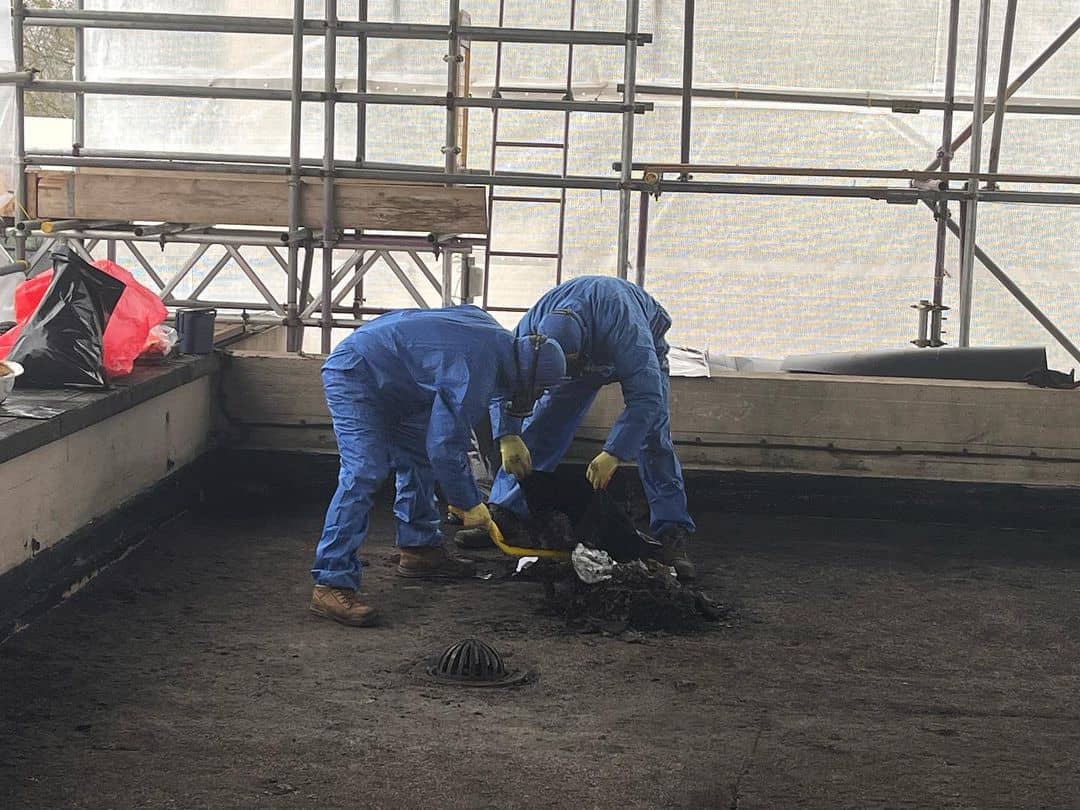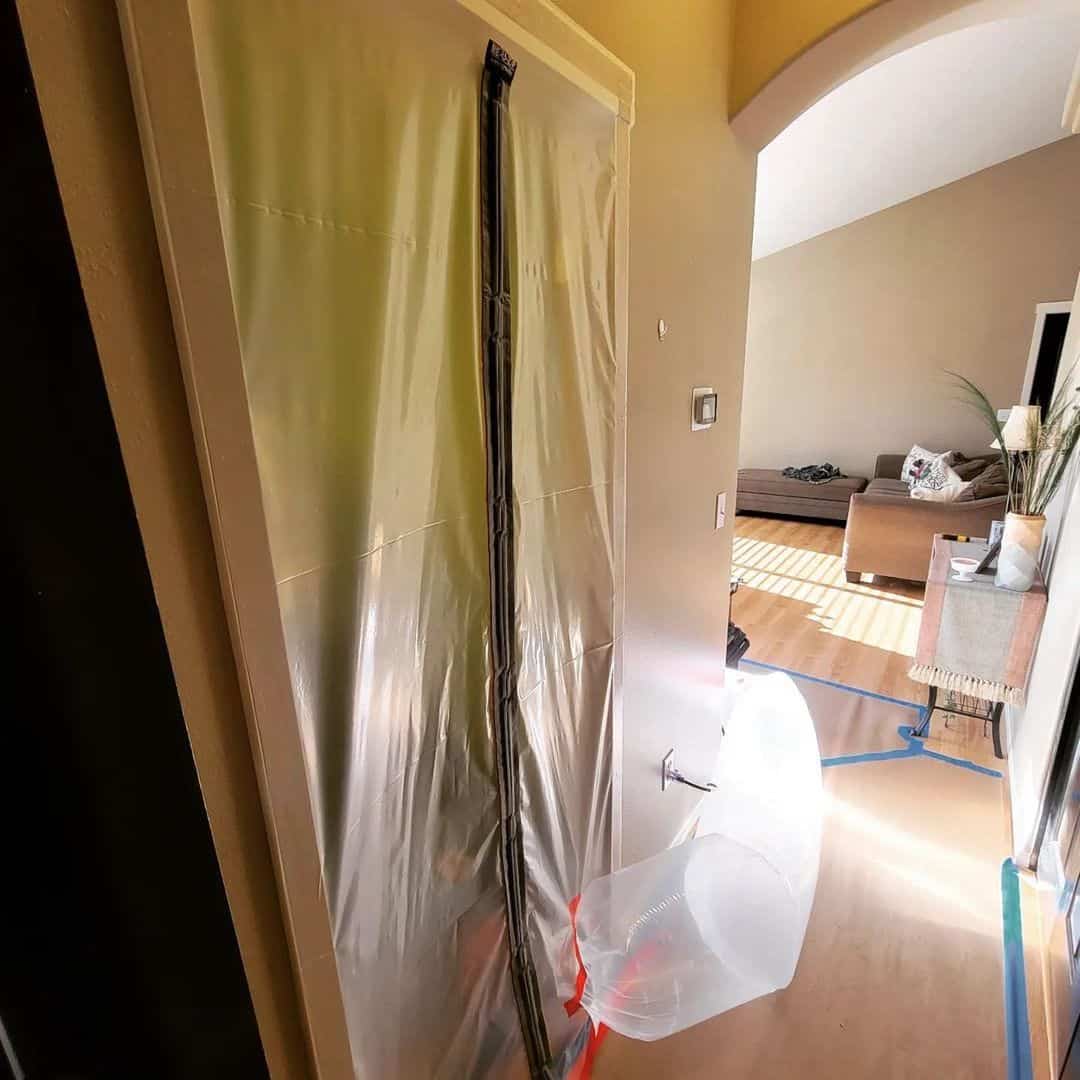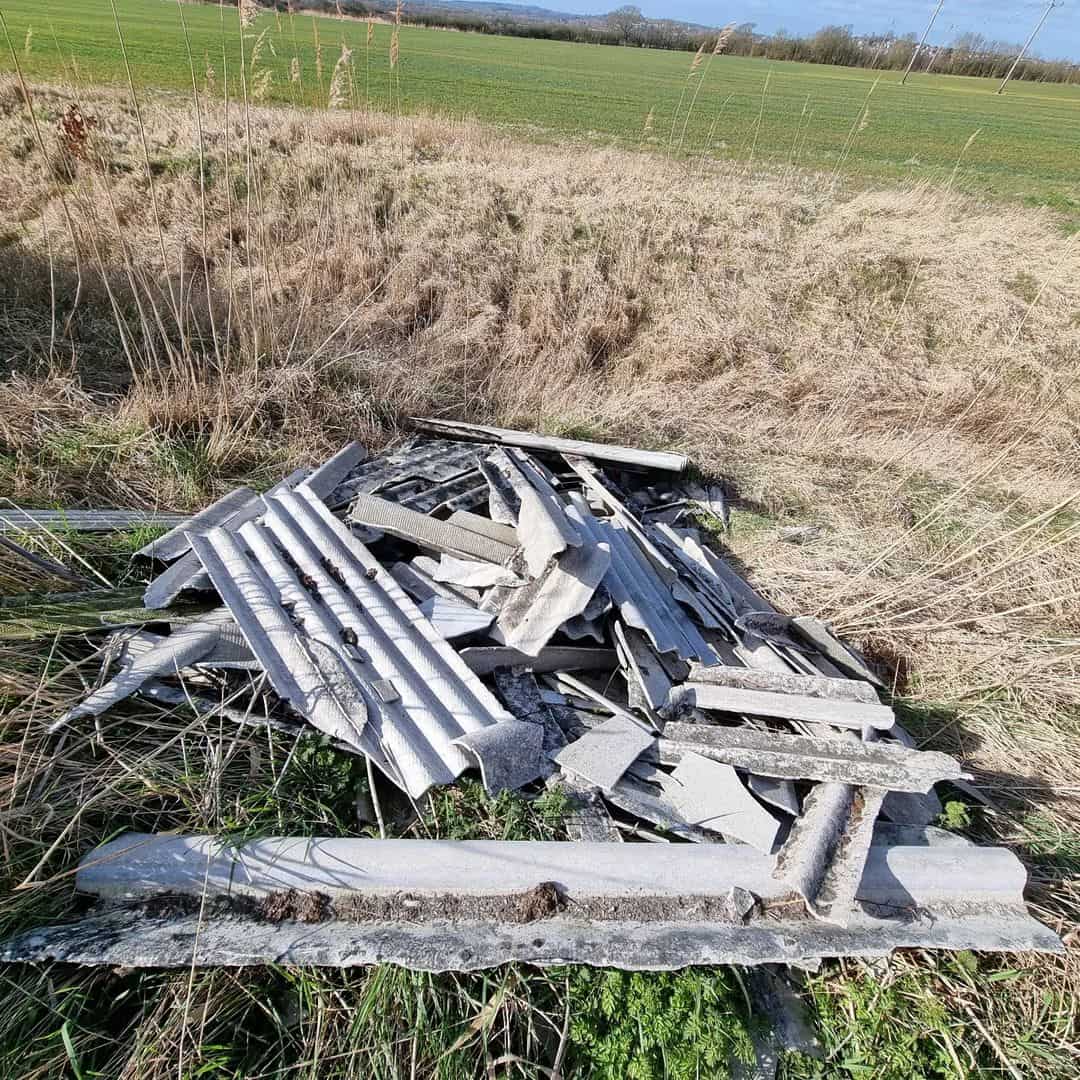Asbestos exposure is a health hazard, leading to respiratory diseases like mesothelioma, asbestosis, and even terminal illnesses like lung cancer. While the exact cost of removing asbestos depends on the type of asbestos, the size of the contained area, and the asbestos disposal fees, the national average cost ranges between $1800 to $2100.
To simplify the cost estimate, we’ve put together this article explaining the factors influencing asbestos remediation costs and the cost by location.
Table of Contents
Factors Influencing Asbestos Removal Costs
Here’s a list of the most common factors affecting asbestos removal costs.
1. Preparation Costs
The preparation cost is the most significant factor driving the cost of removing asbestos. A single room will require few materials and preparation, whereas an entire floor will take more materials and preparations at a larger scale. This setup cost of asbestos removal and containment takes around 60 to 70% of the total cost.
2. The Contamination Area
Typically, asbestos is limited to particular areas within a household or a commercial building. However, how easy it is to remove and contain the exposure from that location is another cost-determining factor. For example, removing asbestos from an attic is more hazardous than a small room.
If you have asbestos inside your home, you can be charged around $20 to $50 per sq. ft. (square foot), going up to $150 per square foot for the ceiling. For homeowners, the total costs for an entire home could go $15000 and upwards.
3. Labor Cost
As asbestos is a carcinogen and a potent respiratory allergen, the area must be cordoned off and sealed to prevent exposure to other areas during the asbestos removal process. On average, two skilled employees are enough to remove asbestos and will charge you from $75 to $200.
4. Setup Cost
The asbestos removal procedure requires adequate setup and usage of equipment to remove and minimize the exposure successfully. The asbestos fibers fly in the air and can be inhaled by workers and home residents. Therefore, limiting the exposure adds up to the final cost.
5. Asbestos Removal Fees
While the EPA has set up national asbestos removal regulations to keep disposal costs the same, each state charges a different fee. A disposal permit costs between $ 50 to $100, whereas the rate ranges from $10 to $50 per cubic yard. The asbestos extracted must be disposed of properly, labeled as a hazardous material, and disposed of in a designated landfill.
6. Material and Equipment Cost

The cost of materials is another cost-driving factor. Ample space will require more preparation and materials to limit asbestos exposure. Likewise, more skilled professionals are needed in a large area, with each worker requiring protective gear like rubber gloves, safety goggles, protective suits, rubber boots, and respirators.
A HEPA vacuum, negative-pressure airflow fans, sealants, and related materials are also required. The total cost of the material and associated equipment costs around $500 and upwards.
7. Asbestos Testing
Before any work begins, the premises must be tested for asbestos contamination. Virtually every asbestos removal company provides these inspection and testing services. You can call an asbestos inspector to visually inspect and test the premises. Depending on your area, these testing costs vary significantly as most cities and state laws regulate these inspections while having varying local requirements.
8. Location of Asbestos Removal
The geographic area where asbestos needs to be removed affects the removal and disposal costs. The permits required for removal also vary in price in different locations. The removal costs in urban areas are higher compared to suburban or rural areas. Some states, including California, recognize non-friable asbestos as non-hazardous, making its disposal more accessible and cost-effective.
9. Type of Property
The cost of asbestos removal between a household and commercial space varies significantly. The commercial rate per square foot is higher than a residential building. While the process, materials, and equipment remain the same, commercial buildings require more preparation to seal off the areas, resulting in increased costs.
10. Siding Repairs
According to regulations in several states, asbestos siding repair is necessary and is added to the total. Encapsulating the sliding is a cheaper alternative but is allowed in some states. You can check state regulations on asbestos siding and repairs to know the exact costs.
11. Asbestos Encapsulation
Asbestos will eventually get suspended in the air regardless of the area you are working on. However, during repair and remodeling, the asbestos is not removed as the asbestos is not at risk of going airborne.
Likewise, asbestos encapsulation is a process in which the asbestos is sealed or encapsulated instead of removed. This encapsulation technique applies a special coating on the asbestos, binding the fibers together to create an impermeable sheet. The cost of encapsulation is almost 25% less than asbestos removal.
Now that we’ve explored the factors, let’s review the cost of asbestos removal by location.
Asbestos Removal Costs by Location

The final costs to remove asbestos also depend on the location, the location’s accessibility, and the effort required to remove the asbestos altogether. A reasonably accessible area like asbestos flooring or pipe might cost you less than eliminating asbestos from the roof.
1. Popcorn Ceiling
The removal cost is between $5 to $10 per square foot but can be much cheaper with encapsulation. However, asbestos encapsulation for popcorn ceilings has a high service fee. Therefore, asbestos removal might be more feasible than encapsulation if you have a smaller space.
2. Ceiling Tiles
The type of asbestos used in flooring and tiles is non-friable, meaning it won’t break apart. A square foot of asbestos tile removal costs ranges between $4 to $12.
3. HVAC Ducts
While most HVAC systems don’t contain asbestos, earlier modes from the ‘70s have asbestos-containing materials in the air ducts. You can either pay from $15 and upwards per square foot to remove asbestos from the HVAC system or opt to replace the system with a recent, environmental-friendly model.
4. Attic Insulation
Old buildings built before the ‘70s contain a high amount of asbestos, as it was a popular insulation material at the time. The material was widely used for being inexpensive, easy to install, and durable. However, asbestos is prone to falling through the cracks, contaminating the indoors with asbestos.
5. Wall and Drywall
Walls of most old constructions are lined with non-friable asbestos and can cost a homeowner more than $20,00 for a 1500-square-foot home. A cheaper alternative is encapsulation, but it can only be executed if the inspection allows it.
6. Soil
A few decades ago, asbestos was used as a soil-leveling substance in commercial zones. The asbestos used in construction was not adequately disposed of, resulting in seepage into the soil. This type of removal ranges from $4 to $6.
7. Roof and Shingles
These areas are the most expensive for asbestos removal as they are hard to reach and seal off. Roof asbestos removal falls between $35 and upwards. Similarly, some roofs with asbestos tiles will require extra work as the workers will remove tiles without damaging them.
Asbestos Removal Cost by Type

There are seven types of asbestos, out of which are amosite (brown asbestos), crocidolite (blue asbestos), chrysotile (white asbestos), and vermiculite used for vermiculite insulation is the most common.
White asbestos is commonly found in walls, floors, ceilings, and ducts and is the most inexpensive type.
In contrast, brown asbestos will cost more to remove as more precautions are necessary for its removal due to its highly toxic and carcinogenic nature. Blue asbestos will also cost the same as brown because this type contains thin asbestos fibers that can quickly get airborne and can be inhaled.
When is Asbestos Removal Necessary?
If you have asbestos in your home, it doesn’t mean its removal is mandatory. The only reason asbestos removal is required is when the asbestos gets damaged, and the loose fibers can get airborne.
These inhaled fibers don’t affect health immediately. Asbestos exposure can take several years to manifest into a medical condition like asbestosis.
People with a long history of asbestosis exposure will eventually develop asbestosis or a similar lung-related disease. In most cases, these symptoms can develop after several decades, making it challenging to identify the exposure area. Some common symptoms include loss of appetite, shortness of breath, chest tightness, and persistent cough.
If you’ve discovered asbestos, it’s imperative to call in professionals for certified asbestos testing, as you might need to remove the exposed asbestos before renovating the area.
Bottom Line
Dealing with exposed asbestos is indeed daunting and comes with high costs. If you want to save money on asbestos removal, you’d prefer hiring a third-party testing service rather than someone from the company. Furthermore, always read the regulations and see whether you can save money by opting for asbestos encapsulation.
Several state-sponsored asbestos removal programs can aid in cutting down the final cost of removal. Lastly, always review, evaluate, and compare the available options before making a final decision.